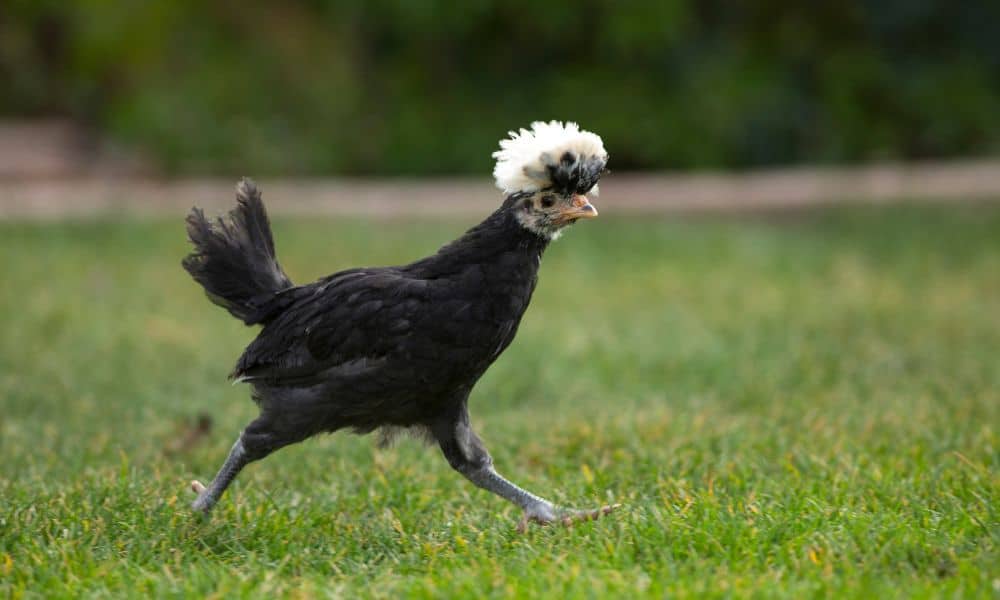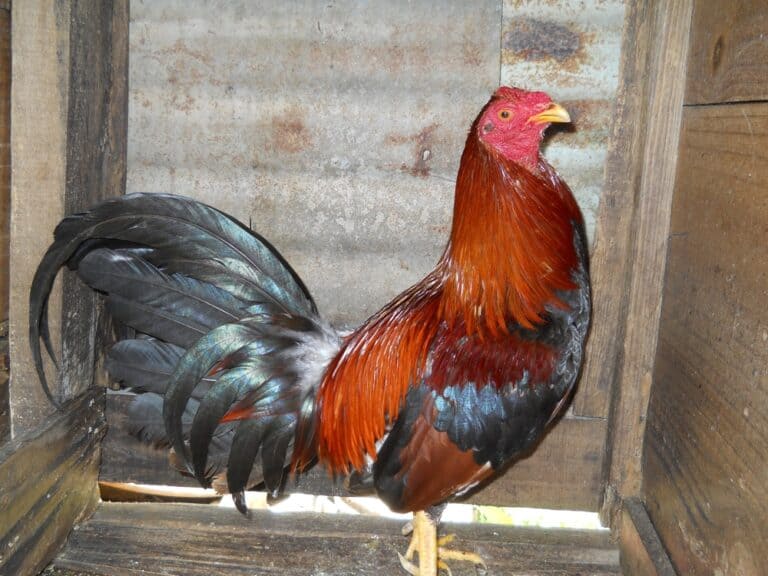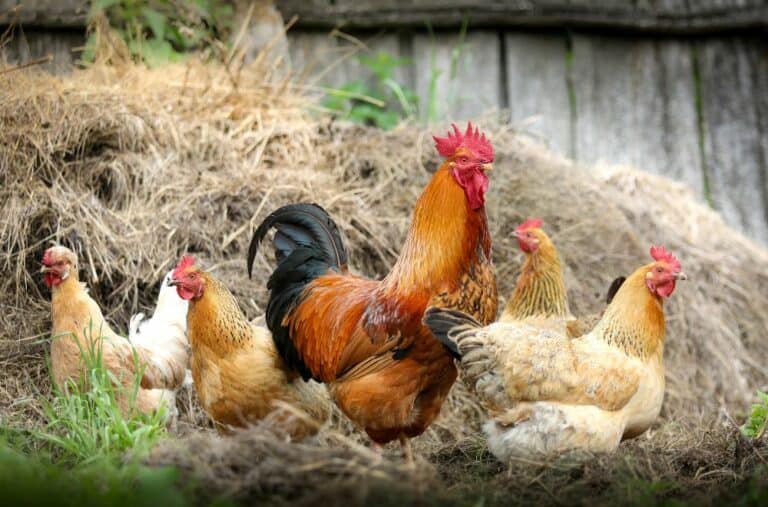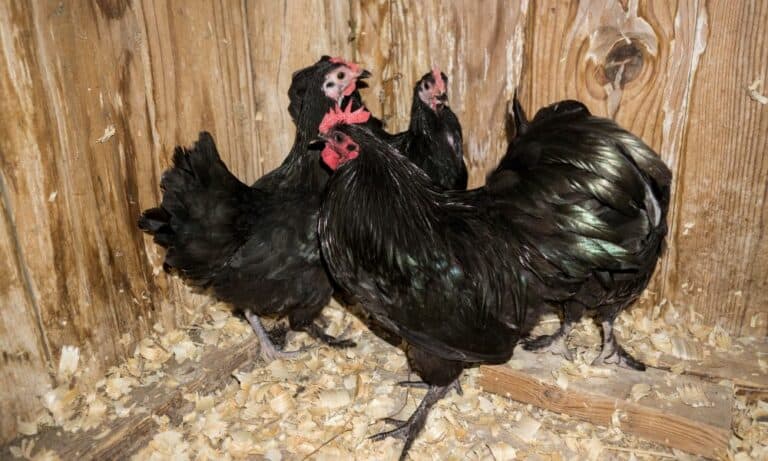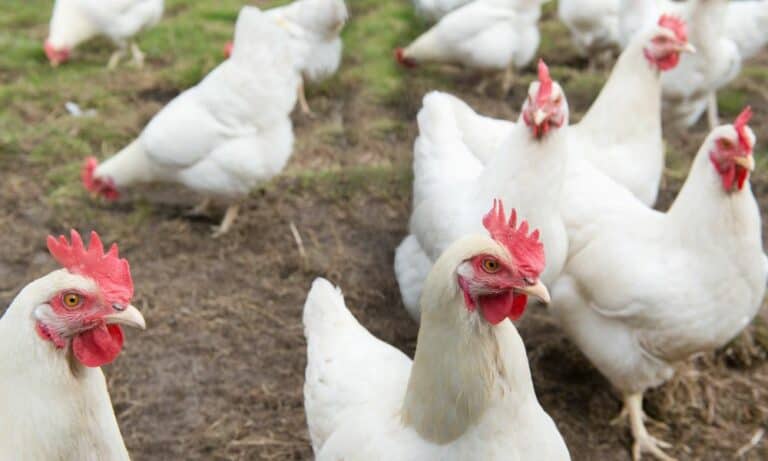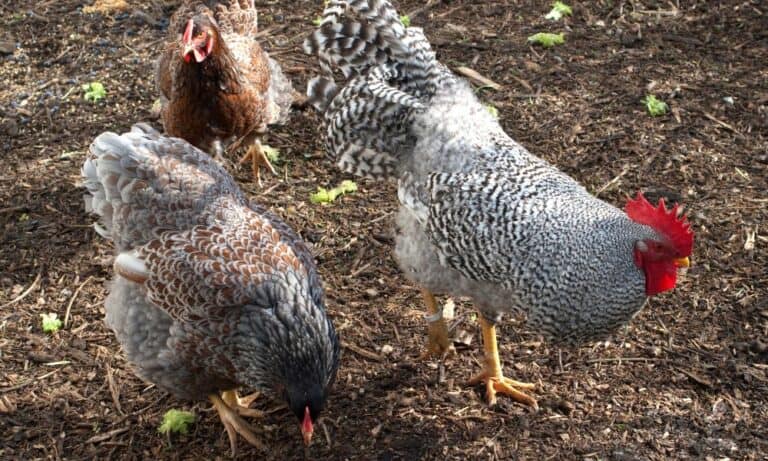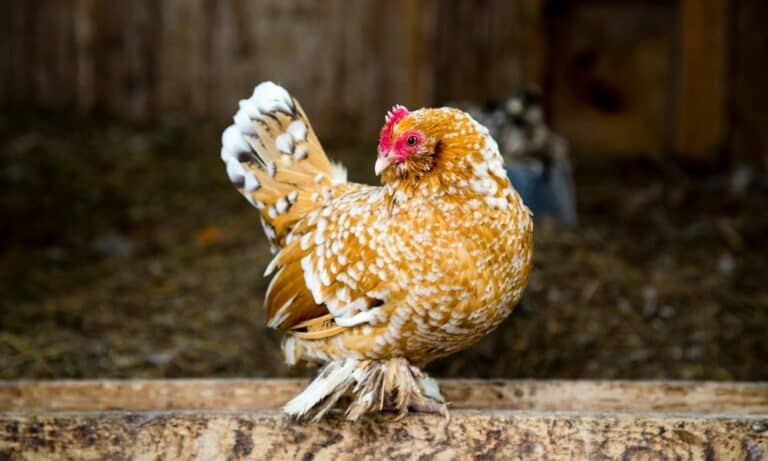Showing chickens is a popular pastime – and if you want to get a piece of the action, you’ve come to the right place. We’re going to check out nine show chicken breeds that are stars of the exhibition ground.
We’ll learn about their origin and characteristics. And we’ll share some hints and tips for prize-winning chucks along the way.
Ready to find out more? Let’s get started!
Show Chicken Breeds
1. Silkie
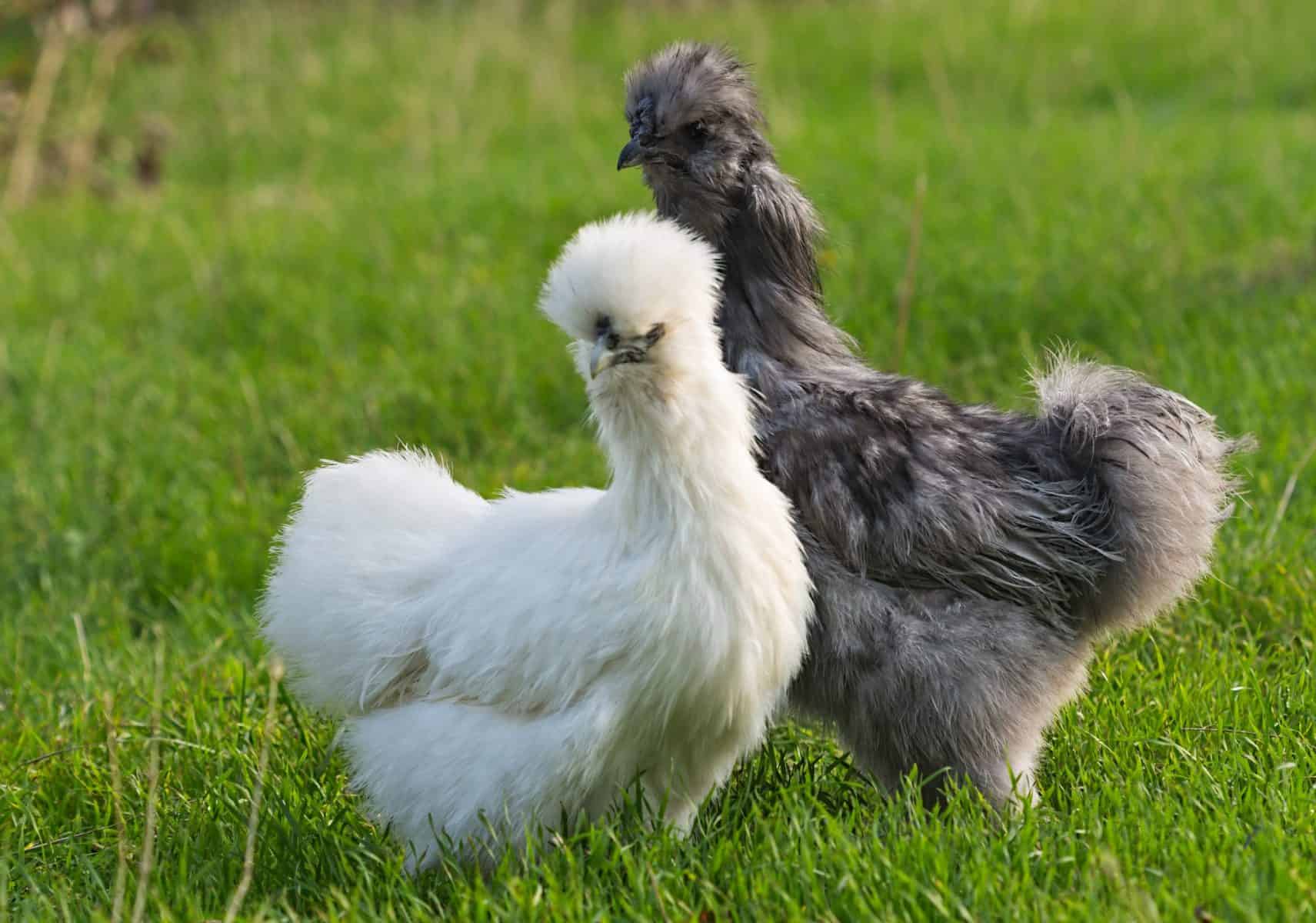
Take one look at the Silkie’s striking good looks and you’ll see immediately why it’s such a favorite on the show ground. Its profuse feathering, elegant crest and fluffy body are instantly recognizable. And the silk-like texture of its plumage is reflected in its name.
Silkies are generally believed to have originated in China. Some, though, believe their birthplace might have been elsewhere in Asia, perhaps the Indonesian island of Java.
Wherever they come from, they have a long history. The explorer, Marco Polo, recorded observing chickens that sound like Silkies way back in the thirteenth century.
Their feathers don’t just look different to those of most other chickens – they work differently too. They don’t have the outer structures known as “barbicels” that most chicken feathers have. That gives them their fluffy appearance. But it also means that Silkies can’t fly.
They have other distinctive features too. Their earlobes are bright blue, and their skin and bones are black. And they have five toes, instead of the more usual four, on each foot.
They’re also extremely friendly and calm birds, making them perfect for exhibiting. And the hens are both decent layers and very broody, great at incubating the eggs of other breeds.
If you’re showing your Silkie, plan to bathe your chook 3 to 5 days before the event. That will have their feathers looking their best on the big day.
2. Polish
Polish chickens are best known for their flamboyant crests. And these play a large part in their popularity as show birds.
Despite their name, the origin of Polish chickens is hotly debated. Some contend that they did indeed come from Poland. But others believe that they hail from the Netherlands and that the name comes from “pol”, the Dutch word for “head”.
In addition to their large crests, Polish chickens have unusual domed heads. And while some have beards – ruffs of feathers beneath their beaks – others don’t.
They have small, red, v-shaped combs, which are often hidden by their abundant feathering. And their red wattles and white earlobes are also small, and may be invisible for the same reason.
The Polish’s large crest may look dramatic, but it can cause some practical problems for these chickens. If it gets dirty, it’s vulnerable to parasites and may cause eye infections. And because it obscures much of the bird’s field of vision, Polishes can be easily startled.
Some people recommend tying or trimming the crest between shows to prevent these problems. But the safest approach is to carefully tape up the feathers. Do it gently, taking great care not to pull them tight, and you’ll have a happier and healthier chook.
3. Orpington
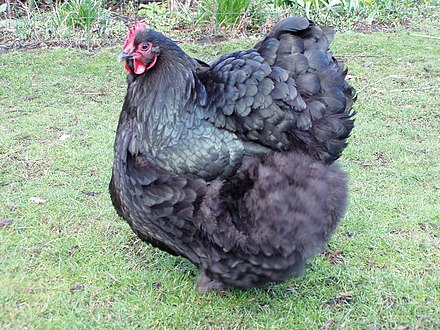
The beautiful Orpington takes its name from the town in Kent, England, where it was first bred. Originally intended to be kept for its eggs and meat, its elegant looks soon saw it become almost exclusively a show bird.
There are both standard and bantam varieties. And over time, a large number of different colors have been developed.
In the US, the American Poultry Association only recognizes standard Orpingtons in the five original shades: black, blue, buff, splash and white. Of these, the most commonly found is buff.
Around the world, however, you’ll also find bantam Orpingtons in shades like lavender, buff black laced, red and birchen.
Both standard and bantam Orpingtons are genial birds, happy on the show ground. Birds that will place well in competitions have low, broad bodies, fluffed out feathers, and legs covered in down. Their backs are short and curvy, and they have U-shaped underlines, small heads and single combs.
At one time, Orpington hens were prodigious layers. That ability has declined over the years as breeders have focused on esthetics. But a typical hen will still lay between 170 and 200 eggs in a year.
4. Chabo
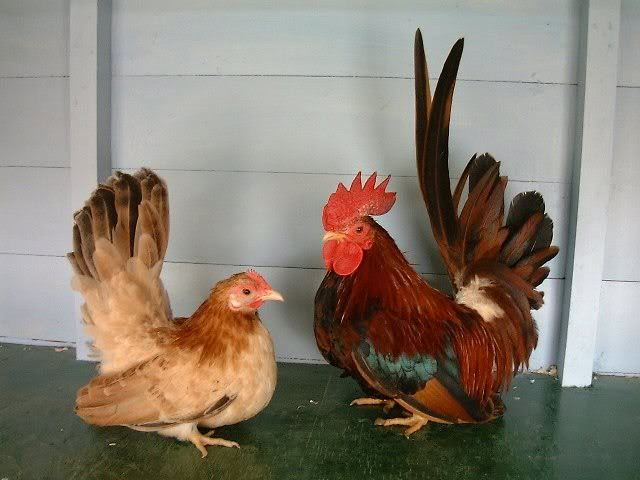
The Chabo hails from Japan, and also goes by the name of Japanese bantam. It’s easily distinguished from other breeds by its short legs and tall, upright tail, which stands much higher than its head.
This striking appearance ensures its status as an ornamental chicken. But its ancestors were believed to have been fighting birds.
The short legs are unfortunately the result of what’s known as a “lethal allele”. If a Chabo has two short-legged genes, it will sadly die before hatching. Two long-legged genes, and it will have long legs that mean it can’t be shown.
That leaves roughly 50 per cent of birds who will carry one short- and one long-legged gene. That golden combination means the chicks should survive – and they’ll have the short legs required for show birds.
In Japan, a number of different varieties of Chabo are recognized. These include the bearded Okina Chabo; two kinds of Higo-Chabo, both of which have large combs; and the Shinguro Chabo, which is black down to its skin and bones.
The American Poultry Association recognizes nine different color varieties. And there are also frizzle, hen-feathered and Silkie-feathered variations.
5. Cochin
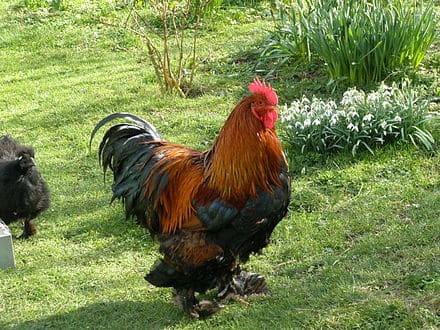
The large and elegant Cochin is raised primarily for exhibition. Its ancestors were Asian chickens brought to the US and Europe from China in the mid nineteenth century. And its distinctive appearance played an important part in popularizing poultry fancying as a pastime.
Cochins have heavy feathering which extends down their legs and even to their feet. That means that they need plenty of TLC to stay healthy. If the feathers on their feet or legs get wet or dirty, that can lead to infection or even, in cold weather, to frostbite.
These chickens have yellow skin, and there are both normal and frizzle varieties. The latter have feathers that curve out from the bird’s body, giving it a sweet, fluffy appearance.
The breed standard was first set down in Britain in 1865. That included nine color varieties for standard birds: black, white, buff, silver buff, silver cinnamon, cinnamon, lemon, grouse, and partridge.
Later, a bantam variety was developed. Both varieties were included in the first ever American Standard of Perfection in 1874. But at that stage, only four colors were recognized in the US: buff, black, partridge and white.
Standard adult males can weigh anything between 8 and 13 pounds, while male bantams should weigh around 2 pounds. Standard females will be between 7 and 11 pounds, while bantams weigh in at around 1.75 pounds.
6. Faverolles
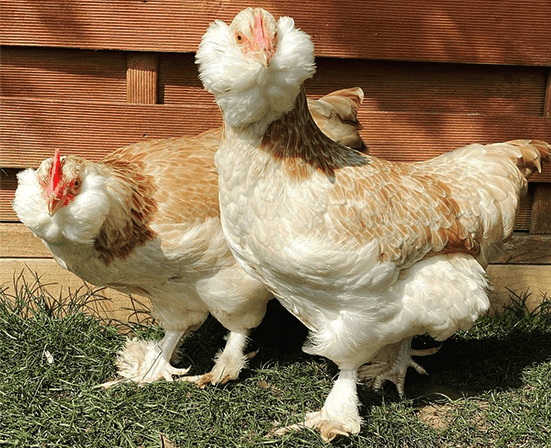
The pretty Faverolles is famous as a friendly and ornamental chicken. It hails from France, and takes its name from a village of the same name.
It was developed in the 1860s and originally intended to be used for meat and eggs. These days, though, it’s used as a show bird, and when it traveled across the English Channel, the British adapted the breed standard. British Faverolles have longer and higher tails than their Continental cousins.
Faverolles are classified as a heavy breed and have beards, muffs and feathered feet, each with five toes. Those feathered feet need to be kept clean and dry to avoid infection and frostbite.
The most common color variety is known as salmon. That describes a combination of brown and creamy white feathers in females, and darker brown, black and straw-colored plumage in males. Other recognized shades include cuckoo, white, ermine, mahogany, splash, and blue.
Faverolle are gentle and friendly birds, comfortable in exhibitions. And their good nature and egg laying capabilities mean they’re also popular as an addition to backyard flocks.
Note that the required weights for Faverolles vary by country. In the USA, the American Poultry Association specifies that cocks should be 8 pounds and hens 6 pounds.
7. Wyandotte
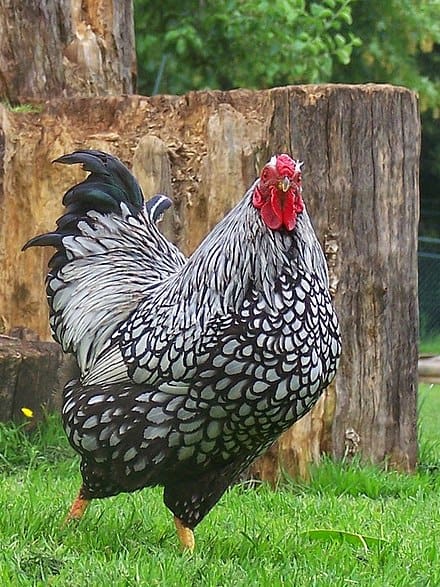
The Wyandotte is famed for its many splendid color varieties. It’s extremely popular on the show ground, particularly in Germany.
The breed was first developed in the US in the 1870s. It’s thought to be the result of cross breeding between dark Brahmas and spangled Hamburgs.
It’s a fairly large chicken, with standard adults weighing anything from 6 to 9 pounds. There’s also a bantam variety, with males weighing about 40 ounces and females about 36 ounces.
Its back is broad, and it has a medium-length body and a full and rounded breast. Its legs are unfeathered – “clean” in poultry fanciers’ lingo – and it has yellow skin and shanks, and a rose comb. Its comb, wattles and earlobes are all red.
The American Poultry Association recognizes nine different colors for standard Wyandottes: blue, black, buff, Columbian, partridge, white, silver laced, and silver penciled. Bantams may also be any of these colors, plus buff Columbian.
If you’re showing your Wyandotte, bathing your chook three days before their first show will have them looking their best. Keep their pen clean, and washing their face, legs and butt is usually all that’s required for their next outings.
8. Serama
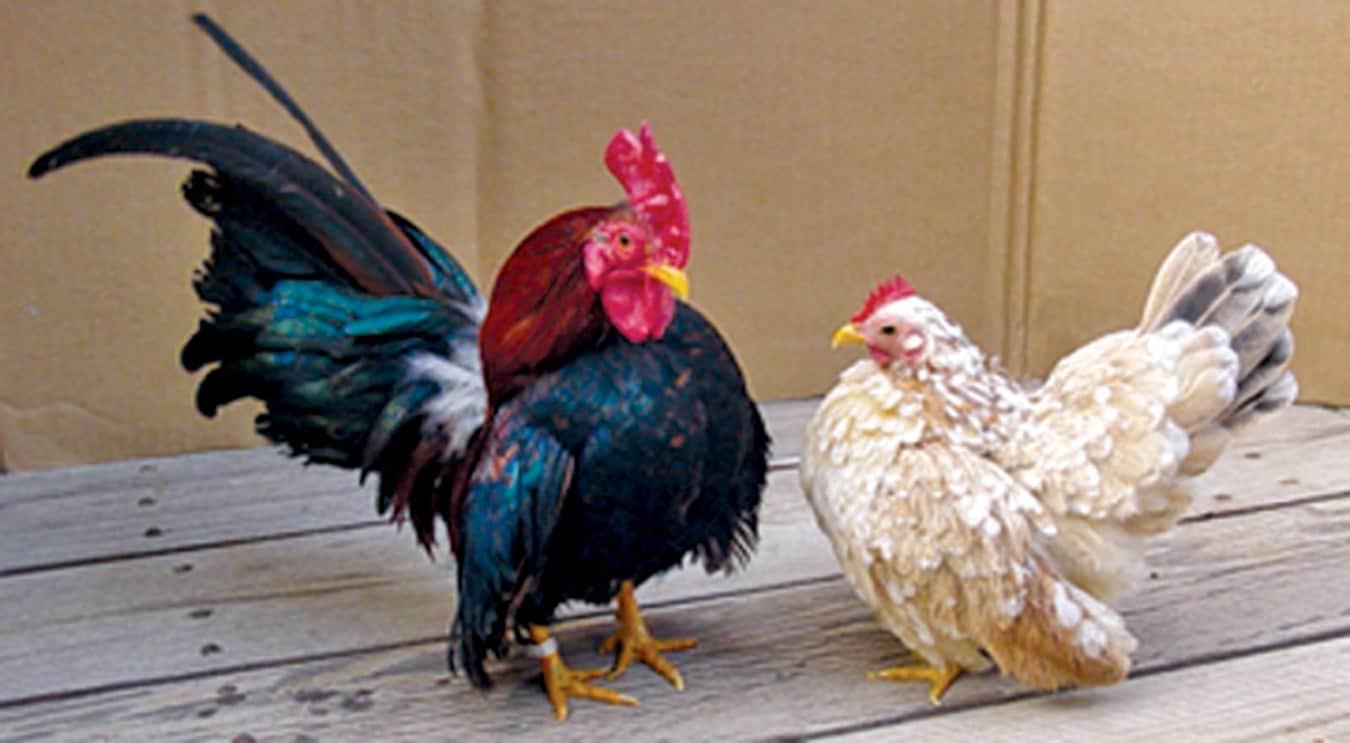
The small but striking Serama originates in Malaysia. It’s a true bantam, believed to have been the result of breeding between Malaysian and Japanese bantams. But the modern version of the breed was developed relatively recently.
It was the work of a breeder named Wee Yean Een, who first exhibited these chooks in 1990. He gave them the name Serama after “Rama”, the title given to the kings of Thailand.
In Malaysia, these regal little chooks don’t have an official breed standard. Instead, they are bred according to particular styles. As a result, there’s considerable variety amongst Malaysian Seramas. But what they all have in common is the look of a fearless warrior on a miniature scale.
In North America, the American Poultry Association recognizes the American Serama. The standards here are stricter, and at present, only white chickens are recognized. Both Silkie and normal feathered varieties are accepted.
When viewed side-on, Seramas have a wide V-shaped or “vase-like” shape. They have muscly bodies, large wings held vertically, and broad chests, which they puff out with pride.
But despite their rather fierce appearance, they’re calm and manageable chooks, great for exhibiting. If you’re intending to breed them, it’s important to note that the chicks will need particular care. They’re very small, so are susceptible to the cold.
9. Sebright
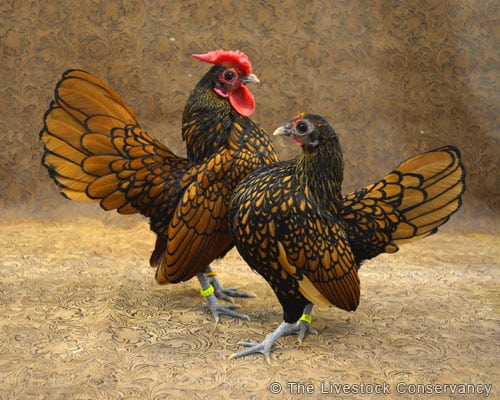
The Sebright is a true bantam and originated in Britain. It takes its name from Sir John Saunders Sebright, who developed the breed in the nineteenth century.
These chickens’ elegant looks meant they were an instant hit as ornamental birds. They’re very small, with males weighing only around 22 ounces, and females 20 ounces. Unusually, male birds have the rounded feathers more usually found in females of other breeds.
The legs of both sexes are clean, their skin is slate blue, and their beaks are a dark horn shade. The combs of cocks are very distinctive. They have five points and a small spike that points backwards.
The first sebrights had combs, wattles and earlobes in a purplish color known as mulberry. Today, though, red and mulberry are both accepted in the breed standards.
Different color varieties are recognized in different countries. In the USA, the American Poultry Association recognizes just two hues: golden and silver.
If you’re new to rearing poultry, it’s worth knowing that it can be quite challenging to breed Sebrights. Their genetic characteristics mean that male birds are often infertile. Hens aren’t good sitters, either, and the chicks sadly often die before reaching maturity.
If they make it to adulthood, though, these chickens are surprisingly resilient. Just watch out for Marek’s disease, to which they’re particularly susceptible.
There’s no business like show business
That brings us to the end of our look at nine spectacular show chicken breeds. We hope you’ve enjoyed learning more about what makes these beautiful chooks so successful in exhibitions.
In many cases, selective breeding means you won’t get large numbers of eggs from these chooks. But you will get friendly birds who’ll really cut a dash in your backyard.
And give them plenty of love and care, and they just might reward you with some trophies too!

